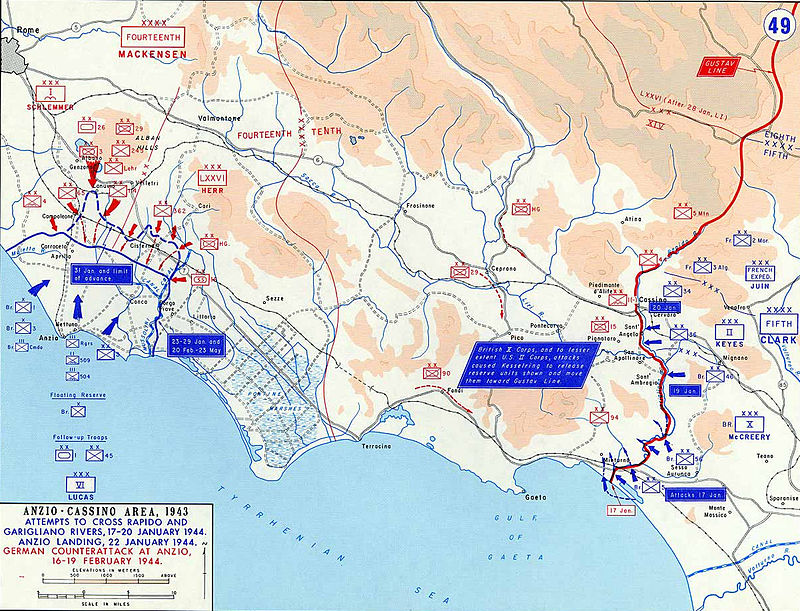Eighty years ago this week the Allies flounder in Italy while the air component of Overlord takes shape
The
US commander General Mark Clark overrode the objections of some of his generals and the British to try to breach the German Gustav Line in
Italy with a night attack by one US division across the Gari river. It
was an abject failure and cost the Americans 1,200 casulaties. It was
not possible to pull all the survivors back across the river and the
Germans took some 900 PoWs.
In Operation Shingle two Allied divisions made an almost unopposed landing at Anzio to draw German troops from the Gustav Line or even to seize Rome 60km away. Churchill had strongly advocated the move but shortage of landing craft limited the size of the attack.
AM
Sir Arthur "Mary" Coningham was given command of 2nd Tactical Air Force
tasked with direct support for Overlord ground forces. Under ACM Sir
Arthur Tedder, whom Eisenhower had chosen as his Deputy Supreme
Commander, he had led the RAF in Africa where it had played a crucial
role in the defeat of the Germans as part of an integrated air/surface
strategy. This created a large counter-weight to the RAF's established
Trenchardian faith in achieving victory through bombing alone.
The judge in the corruption trial of a Cunliffe-Owen aircraft company executive and two civil servants ordered a not guilty verdict because he concluded that the factory extension to build Seafires at the centre of the accusation was good value for the state. There was no argument that the civil servants had not accepted £1,200. Evidence on the facts would have deeply embarassing to the Ministry of Aircraft Production and the broader government.
The Luftwaffe launched Operation Steinbock bombing raids on London, the "Baby Blitz". The motive was pure retaliation. As V weapons were not ready, precious aircraft were wasted on this futile effort which met the many RAF night fighters built to counter the first Blitz but almost unused since 1941.



Comments
Post a Comment